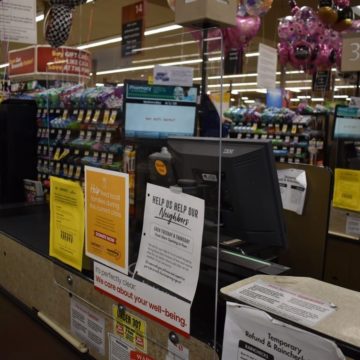California is seeing record unemployment numbers, with the largest single month of job losses ever recorded and a 15.5 percent unemployment rate in mid-April, about a month after the state began sheltering-in-place due to the novel coronavirus pandemic.
But the blow has been a little softer overall in Silicon Valley, local experts say.
The unemployment rate in Silicon Valley is hovering between 11 and 12 percent by some estimates — though others say that’s an undercount. The nine-county Bay Area’s unemployment rate is also lower than the state’s, at about 13 percent.
“The numbers today are the first time in the reporting that we’ve seen, not necessarily the full economic impact, but a real economic impact,” Jeff Bellisario, executive director for the Bay Area Council Economic Institute, said. “It’s unprecedented, both in terms of just the total scale, but for sure in the pace of job destruction.”
The news comes as layoffs and furloughs in the Bay Area are up — with more than 21,000 workers suddenly out of work in March alone — and hiring is down by more than 25 percent in the region, according to data by Joint Venture Silicon Valley’s Institute for Regional Studies.
Small business owners have been hit the hardest, particularly those in food, drink and hospitality industries, according to a recent report by Facebook and the Small Business Roundtable.
But Silicon Valley has likely been somewhat insulated from the most dramatic cuts to its overall workforce because of the tech companies based in the region that can pivot to a work-from-home model and continue to interface with customers, said Rachel Massaro, the institute’s director of research.
“There’s a possibility that that has worked in the region’s favor to mute the increases in the unemployment rate,” she said. “Although, of course, we don’t want to downplay how incredibly high (the rates) are, and the share of our region’s population that is struggling because of that.”
Despite being somewhat insulated, the true number of people out of work is likely higher than what’s being reported because the state unemployment numbers don’t capture the people who have stopped looking for jobs during the pandemic, some say.
The workforce in Santa Clara and San Mateo counties dropped by about 3.8 percent between March and April, Massaro said, meaning about 55,100 fewer people were looking for jobs last month. Some of those people may have chosen to leave the workforce without the pandemic, but the decrease is large compared to historical averages, she said.
By the Bay Area Council Economic Institute’s estimate, the nine county Bay Area’s true unemployment rate actually sits at about 17.5 percent when accounting for those who have been left out of the unemployment calculation, compared to the state’s approximately 13 percent calculation.
“Really, what we did was we added back in people that are not counted in this calculation,” Bellisario said. “The reason that they’re not counted is because they’re not looking for work.”
The data released Friday also only accounts for those laid off as of mid-April, though state data shows that unemployment claims have continued to climb in the past month. In the past 10 weeks, the state has received 4.8 million unemployment claims, according to the Employment Development Department.
Unemployment data for May will be released in June and both Bellisario and Massaro say they expect the numbers to be much higher.
About 22 percent of Silicon Valley’s workforce is in jobs that are face-to-face and can’t be done remotely, Massaro said.
“Seeing that the unemployment rate is still lower than 22 percent — that share of the workforce in the at-risk occupations — makes me pause to think that perhaps in May the numbers will have risen closer to that 22 percent.”
But there is hope on the horizon for the Bay Area.
Though a recent report by Joint Venture’s Institute for Regional Studies noted the number of layoffs in the region are likely underreported due to an extension on when companies have to announce layoffs, about 85 percent of those reported are expected to be temporary.
That’s “a good indicator that a lot of these people that are currently unemployed will be going to back to work soon as the economy begins to reopen,” Massaro said.
Bellisario is also optimistic because of the region’s early shelter-in-place orders. Santa Clara County emerged as an early hotspot for the virus, but infection and hospitalization rates have since slowed.
“I think to the extent that the Bay Area is eventually able to open up businesses a bit more quickly and maybe get people to work in a way that makes sense, I think the region can recover faster than other places that were more impacted by the virus,” Bellisario said.
Silicon Valley started to reopen some parts of its economy Friday, allowing for more companies to operate and for retailers to offer curbside pickup. But Matt Mahood, president and CEO of The SVO — Silicon Valley’s largest chamber of commerce — told San José Spotlight that any economic gains from those changes would likely be minute.
Indeed, Bellisario said the region’s best economic bet is to try stopping more damage from happening where possible.
“Industry mix can insulate certain places from the crisis, though I would say the longer we go, I know no industry is safe,” he said. “No county is going to really survive this in a great way. It’s more about trying to limit the economic damage at this point.”
Contact Janice Bitters at [email protected] or follow @JaniceBitters on Twitter.





